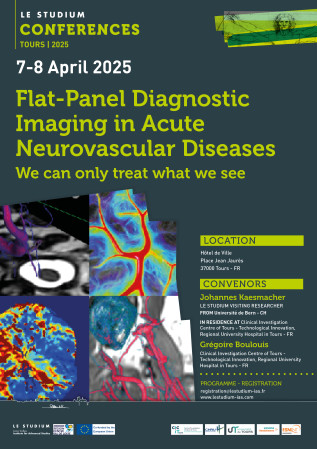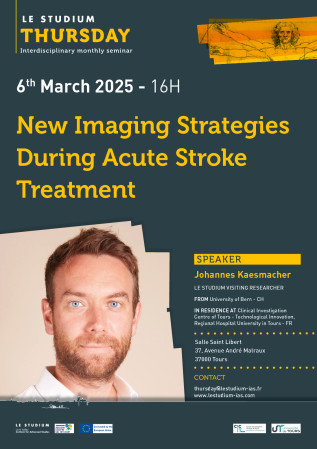Johannes Kaesmacher

From
In residence at
Host scientist
Grégoire Boulouis
BIOGRAPHY
Johannes Kaesmacher is a clinician-scientist (MD, PhD) and interventional neuroradiologist with a strong background in stroke treatment and clinical stroke research. After initial training in Munich, he is currently an Associate Professor at the Medical Faculty of the University of Bern and a Research Group Leader at the Stroke Research Center Bern. He also serves as an attending physician at the University Hospital Bern. His research focuses on adjuvant medical therapies and new imaging techniques during acute interventional stroke treatment. He has been actively involved in multiple large international randomized stroke trials, including SWIFT DIRECT and IRIS, and is the sponsor of the recently launched TECNO trial. One of his specific research interests is detecting residual perfusion deficits after acute procedures to enable more individualized decision-making during acute patient care. He is actively involved in university-level training and education and serves on several committees of European medical societies (e.g. European Stroke Organisation, ESO; European Society of Minimal Invasive Neurological Therapy, ESMINT).
PROJECT
PeRfusiOn Post tHrombEcTomy (PROPHET) - A technical development and clinical validation project
Mechanical extraction of clots (“mechanical thrombectomy”) with specialized catheters has become the standard of care for treating stroke patients with a large-vessel occlusion. However, in more than half of the treated patients, remaining small vessel occlusions (e.g. due to clot fragmentation during the procedure) limit the benefit of this therapy. In current clinical routine, the detection of these small remaining vessel occlusions and the decision for further treatment by the operator is based on 2D angiographic images. This technique has several limitations, mainly due to its two-dimensional nature. Recently, a new imaging technique, with the possibility to acquire whole brain 3D time-resolved perfusion directly in the operating room was technically made possible (so called flat-panel detector computed tomography perfusion imaging, FDCTP). It can overcome the many limitations of 2D angiographic images, but processing algorithms and clinical validation are currently lacking. This project aims to develop, implement and validate FDCTP for evaluating brain reperfusion during acute interventional management of stroke patients.
The primary aim is to implement the technique in clinical routine, redefine algorithms and provide clinical validation through a prospective multi-center study. The clinical validation study is supported by the Centre d’investigation Clinique Tours and is designed as a prospective diagnostic study. If FDCTP performed immediately after thrombectomy will provide additional critical clinical information, this could have a significant impact on treatment decisions in stroke patients and in-hospital workflows. Specifically this information would allow for more individualized treatment decisions and the operators can gain new important information on brain tissue viability, remaining vessel occlusions and brain eloquence.
Incomplete reperfusion of the brain in acute ischemic stroke remains a significant concern with notable societal costs. The development and implementation of this new technique could further improve patient care and can help to better understand microcirculatory failure in stroke patients.


